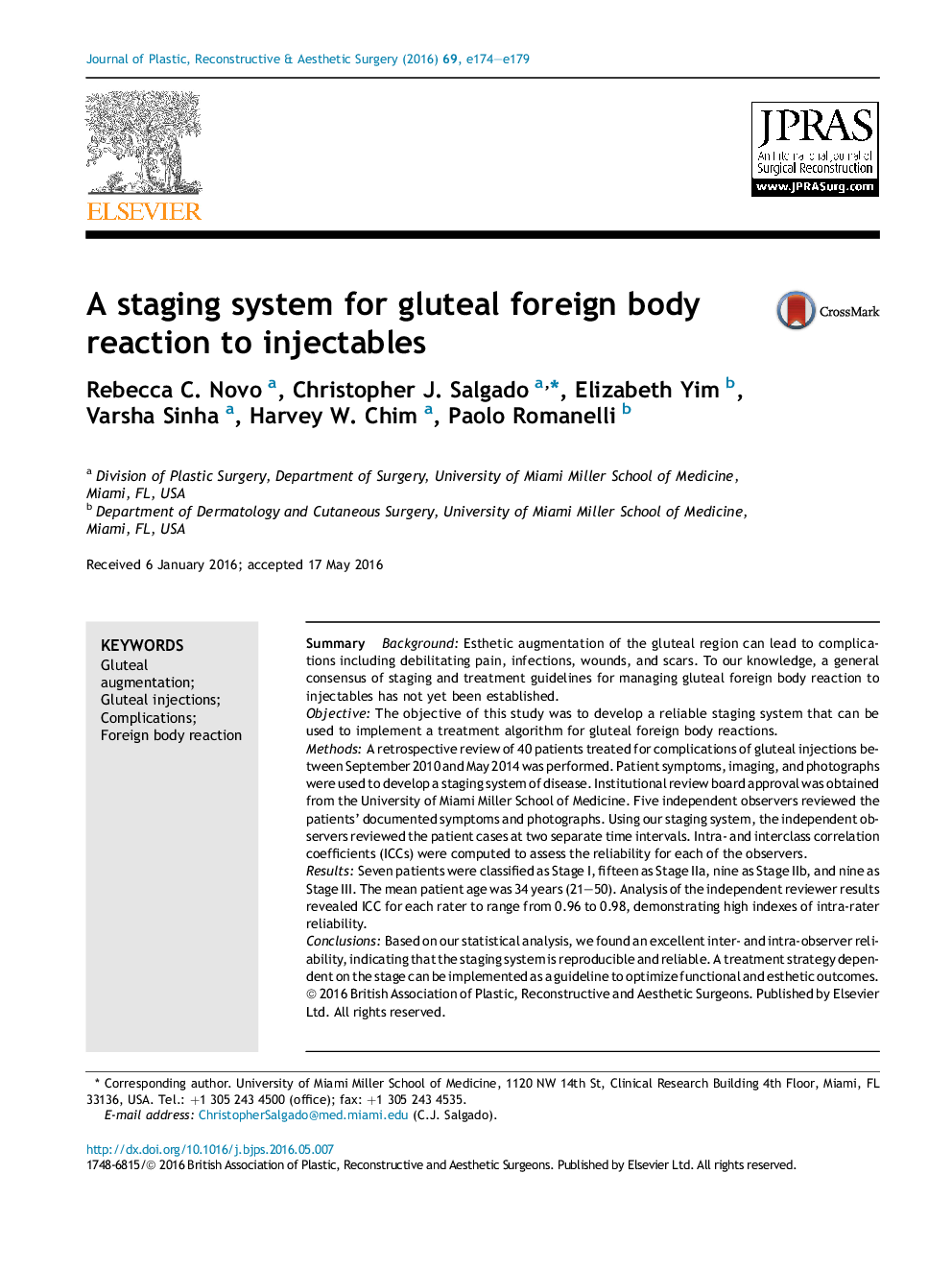| Article ID | Journal | Published Year | Pages | File Type |
|---|---|---|---|---|
| 4117038 | Journal of Plastic, Reconstructive & Aesthetic Surgery | 2016 | 6 Pages |
SummaryBackgroundEsthetic augmentation of the gluteal region can lead to complications including debilitating pain, infections, wounds, and scars. To our knowledge, a general consensus of staging and treatment guidelines for managing gluteal foreign body reaction to injectables has not yet been established.ObjectiveThe objective of this study was to develop a reliable staging system that can be used to implement a treatment algorithm for gluteal foreign body reactions.MethodsA retrospective review of 40 patients treated for complications of gluteal injections between September 2010 and May 2014 was performed. Patient symptoms, imaging, and photographs were used to develop a staging system of disease. Institutional review board approval was obtained from the University of Miami Miller School of Medicine. Five independent observers reviewed the patients' documented symptoms and photographs. Using our staging system, the independent observers reviewed the patient cases at two separate time intervals. Intra- and interclass correlation coefficients (ICCs) were computed to assess the reliability for each of the observers.ResultsSeven patients were classified as Stage I, fifteen as Stage IIa, nine as Stage IIb, and nine as Stage III. The mean patient age was 34 years (21–50). Analysis of the independent reviewer results revealed ICC for each rater to range from 0.96 to 0.98, demonstrating high indexes of intra-rater reliability.ConclusionsBased on our statistical analysis, we found an excellent inter- and intra-observer reliability, indicating that the staging system is reproducible and reliable. A treatment strategy dependent on the stage can be implemented as a guideline to optimize functional and esthetic outcomes.
